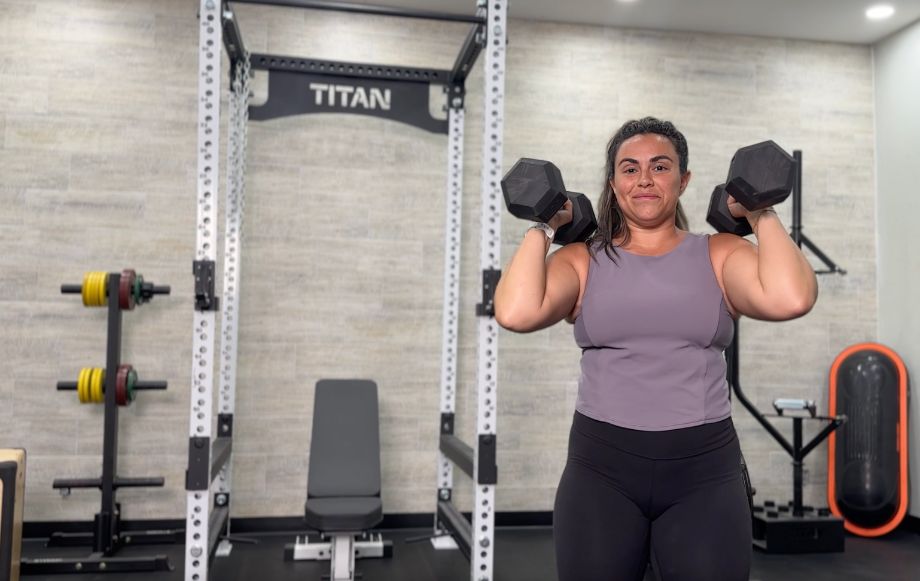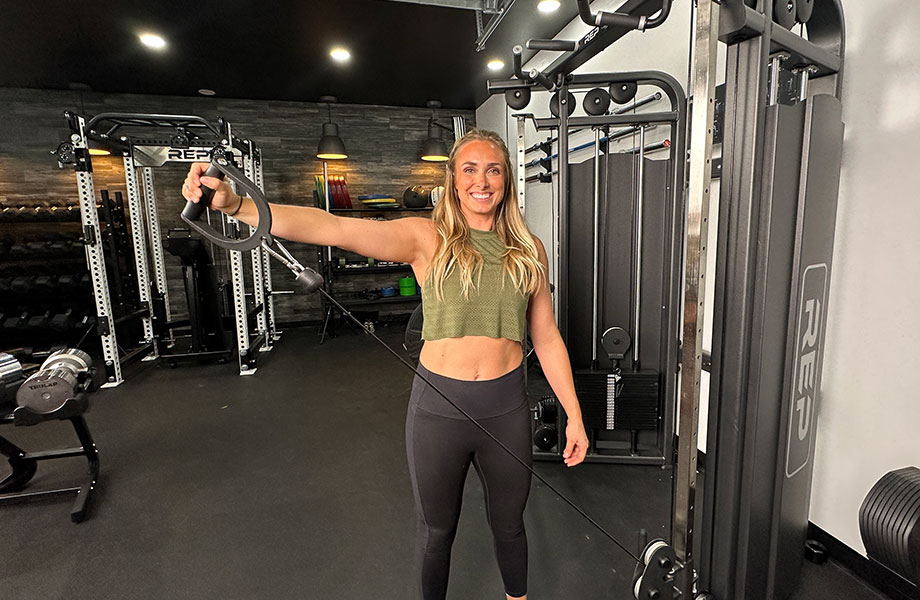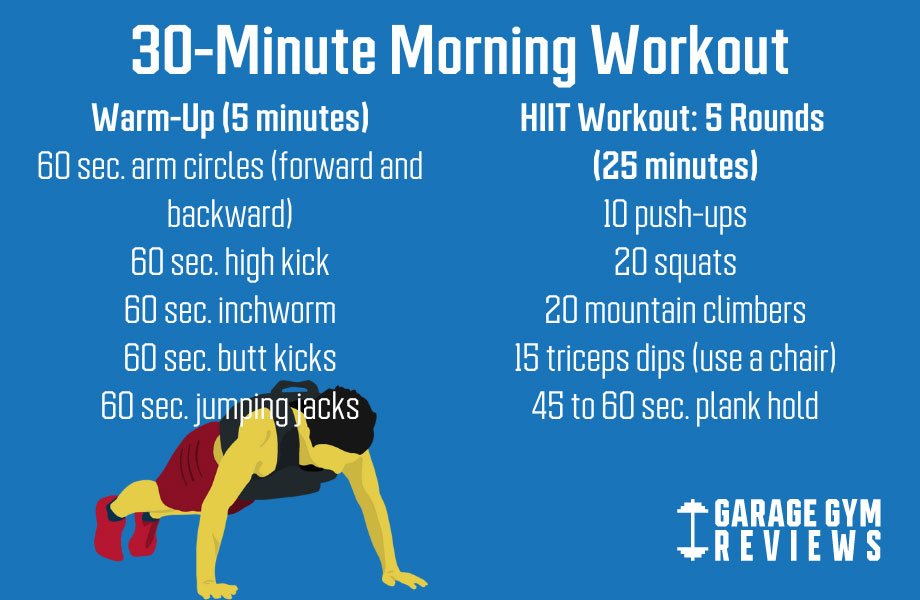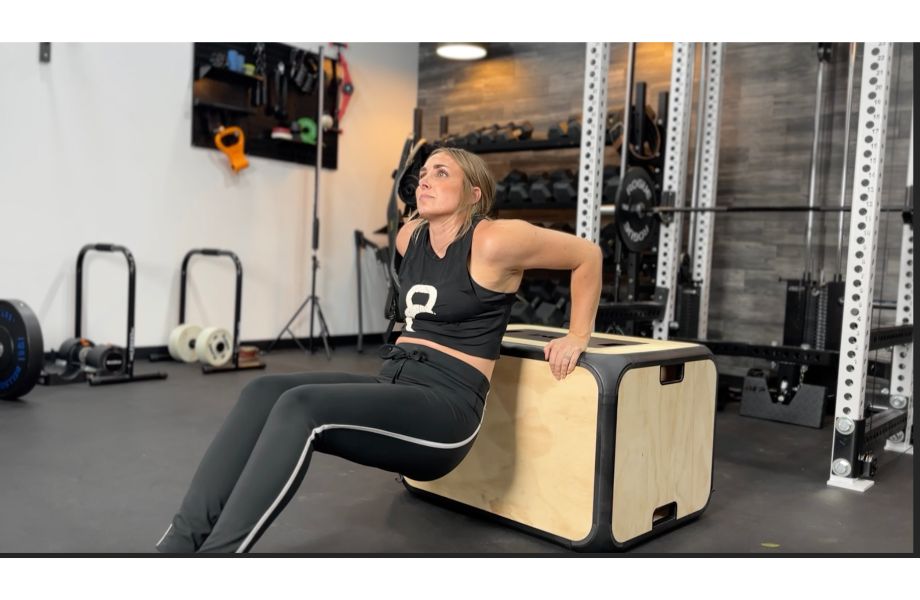We test and review fitness products based on an independent, multi-point methodology. If you use our links to purchase something, we may earn a commission. Read our disclosures.
There’s no better sense of accomplishment than getting in a workout first thing in the morning.
For early birds like me, morning exercise comes easy. I’m up at the crack of dawn anyway, so it makes sense to do some sort of physical activity before I start my day. I appreciate everyone is different, and night owls may dread even thinking about working out at that time of day.
RELATED: Morning Vs. Evening Workout
That being said, here’s a wake-up call (get it?). Exercising in the morning1 (between 7:00 am and 11:59 am) may be better for weight loss compared to evening workouts (between 3:00 pm and 7:00 pm). Morning exercise can also help you make healthier food choices throughout the day, improve your mood and focus, and free up your schedule to focus on other priorities.
RELATED: High-Protein Breakfast: 5 Drool-Worthy Recipes
Today, we’re sharing a 30-minute workout routine created by certified personal trainer (CPT) and GGR Head of Content Kate Meier. We’ll also go through the benefits of morning workouts, and give five expert tips so you can make the most out of them.
Benefits of Morning Workouts
Before we go into our tips for working out in the morning, here are five benefits of morning workouts:
1. Better Mood and Focus
Exercise reduces levels of the body’s stress hormones2, such as cortisol and adrenaline. It also stimulates the production of endorphins, which help you relax and feel optimistic. This can improve your mood and focus throughout the day.
RELATED: Runner’s High: What It Is, and What Causes It
“For the first few hours after I exercise, I always feel like I have a lot of energy and mental focus,” explains Kate. “This is ideal because I have a lot of decisions to make in the morning, and a workout before helps me make them quicker and more effectively.”

2. Promotes Fat Burning
Compared to afternoon and evening workouts, fat oxidation may be higher when exercise is performed before breakfast3. This may help with weight loss. You can still burn fat by exercising at other times, so morning workouts aren’t the be-all, end-all. But if you’re looking to optimize your routine, training at an earlier time could make a difference.
RELATED: Activities That Burn the Most Calories
3. Promotes Healthier Food Choices
Psychologically, when we work out, we want to eat better and make healthier choices. That’s just how we work as humans. By exercising consistently, we may pursue healthier dietary preferences and regulate our food intake4. We may eat more fruit and vegetables instead of fried foods and soft drinks. For me, there’s no better way to start the day off right than with a morning workout.
RELATED: High-Protein Vegetables
4. You’re Free For The Rest Of The Day
By getting in an early morning workout, you don’t have to think about it later on. Kate says, “The downside to evening workouts is that you may want to do something with your friends or family, and it’s more likely that you’ll skip exercising.” This way, you’ve checked off your workout first thing, and it still gives you time to lead a social life or relax at home later in the day.
5. May Help Control Blood Glucose Levels
For those with Type 1 diabetes, exercise in the morning versus the evening may significantly lower the rate of hypoglycemia5. Morning workouts may also help improve metabolic control the following day. Even for those without diabetes, physical activity may help lower your blood glucose levels by making your body more sensitive to insulin.
Tips for Working Out in the Morning
OK, so you understand the benefits of morning workouts. But before you set your 5 a.m. alarm, below are five tips to help you make the most out of your workouts:
1. Sleep Early (And Sleep Well)
Sleep and exercise are like chicken and egg. If you exercise more, you may be able to sleep for longer and sleep better6. But the inverse is also true. “Whenever I’ve gone to sleep later than usual, or even worse, done something that affects my circadian rhythm, I don’t always feel like exercising in the morning,” says Kate.
Yes, we’re all human, and life happens. But as much as possible, sleep early and try to get seven or eight hours of sleep. Aim to wind down properly before bed each night (yes, that means no Netflix!). And when your alarm rings, get out of bed straight-away and don’t hit the snooze button.
2. Work Out First
We may get up early with the best of intentions. But, if we don’t exercise in the first hour or two, we might start finding reasons why we can’t. I’ve been there. You check your emails, and suddenly, there’s an urgent priority that needs to be sorted out now. The solution? Exercise before checking your phone, emails, or social media. Then, do what you need to.
3. Prepare The Night Before
You’ve probably heard, “prepare your workout clothes the night before.” This really does work. No, I’m not going to suggest that you sleep in your workout clothes, but being prepared is key. This doesn’t just apply to your clothes, water bottle, and sneakers. Prepare your workout, too, so you know what you’re doing. It can be difficult to think about these things in the morning if you’re not a morning person (Hint: we’ve included a 30-minute workout routine below if you get stuck).
RELATED: Best Running Water Bottle
4. Find Workouts You Enjoy

There’s nothing worse than having nightmares about the workout you’re faced with the next morning. Okay, this may be an exaggeration (or is it?), but it’s important to find workouts you enjoy. In fact, enjoying the exercise you’re about to do7 could make all the difference for your exercise habits, intention to continue exercising, and exercise frequency.
5. Fuel Up
“Have a glass of water and perhaps a coffee when you wake up,” Kate explains. “Depending on what time it is, you may want to eat a small breakfast, too.” Every individual is different when it comes to fuelling up before their early morning workout. If I exercise first-thing, I prefer not to eat anything at all, but I’ll have a black coffee. Do what’s right for you.
RELATED: Coffee Vs Pre-Workout
Try This: 30-Minute Morning Workout Routine
You’re sold. The benefits of morning workouts sound great, and you’re ready to give it a go. But what exactly should you do? Here’s a 30-minute bodyweight morning workout routine that Kate recommends:

Repeat the HIIT workout for five rounds altogether (so each round should take around five minutes in total). Kate says, “Have a quick breather between each exercise, but not too long, and then at the end of each round, rest about a minute or so before moving on.”
RELATED: Benefits of HIIT Training
This morning workout works the full body, and incorporates both cardio and strength training. If it’s too intense for you, start with two or three rounds and build up slowly until you’re able to reach five rounds. Or, simply reduce the number of reps for the exercises you find difficult.
Morning Workout: FAQs
Is it a good idea to workout in the morning?
Yes, it can be a good idea to work out in the morning. There are tons of benefits to morning workouts, including better focus and mood for the rest of the day, being free to focus on other priorities afterward, and in some cases, a reduction in body weight and fat because you’re exercising in a fasted state8.
There are downsides to working out in the morning also. Some people simply aren’t morning people. They don’t want to set their alarm even earlier than they already do. It’s likely that you won’t be hydrated enough, and because you haven’t moved around a lot, you may not be able to work out as intensely as you would later in the day because you still have stiff joints.
Ultimately, it’s about testing different times of the day and seeing what works best for you to stay consistent in the long run. If that means the morning, great. If not, that’s great, too.
What is the most effective workout for morning?
The most effective workout for the morning depends on where you’ll be exercising and the type of exercise you enjoy doing. Any workout you usually do later in the day can be done in the morning.
For those into weight training using barbells and dumbbells, do that. If you prefer aerobic workouts that really increase your heart rate, do that instead. And if you’re a Pilates kind of person that can hold the plank position for minutes on end, who am I to stop you from doing this instead? Remember to sleep well, fuel up, and hydrate yourself before doing morning workouts.
If you’re looking for a bodyweight workout that you can do in the morning from the comfort of your home, do five rounds of the following exercises, resting a minute after each round:
-10 push-ups
– 20 squats
– 20 mountain climbers
– 15 triceps dips (using a chair)
– 45 to 60 seconds plank hold
Is it OK to workout in the morning on an empty stomach?
The jury’s still out on whether it’s OK to work out in the morning on an empty stomach. Some people might have high energy levels first thing in the morning, and all they need to do is chug a glass or two of water, and they’re ready to go. Others may need to take a pre-workout or have a strong cup of coffee instead.
RELATED: Best Pre-Workout
And some wouldn’t ever dream of working out without eating. They need some carbohydrates, protein, and fiber; otherwise, the workout simply isn’t going to happen. Every individual is different. I’ve worked out on an empty stomach plenty of times (in fact, I did it for a year or two when I shifted to 6:30 am gym sessions). I couldn’t even stand the thought of food at that time. It did take some getting used to, but as with most things, the body simply adapts.
References
- Willis EA, Creasy SA, Honas JJ, Melanson EL, Donnelly JE. The effects of exercise session timing on weight loss and components of energy balance: midwest exercise trial 2. Int J Obes (Lond). 2020 Jan;44(1):114-124. doi: 10.1038/s41366-019-0409-x. Epub 2019 Jul 9. PMID: 31289334; PMCID: PMC6925313.
- Harvard Health Publishing. Exercising to Relax. 2020, July 7.
- Iwayama K, Kurihara R, Nabekura Y, Kawabuchi R, Park I, Kobayashi M, Ogata H, Kayaba M, Satoh M, Tokuyama K. Exercise Increases 24-h Fat Oxidation Only When It Is Performed Before Breakfast. EBioMedicine. 2015 Oct 30;2(12):2003-9. doi: 10.1016/j.ebiom.2015.10.029. PMID: 26844280; PMCID: PMC4703705.
- Joo J, Williamson SA, Vazquez AI, Fernandez JR, Bray MS. The influence of 15-week exercise training on dietary patterns among young adults. Int J Obes (Lond). 2019 Sep;43(9):1681-1690. doi: 10.1038/s41366-018-0299-3. Epub 2019 Jan 18. PMID: 30659257; PMCID: PMC6639161.
- Gomez AM, Gomez C, Aschner P, Veloza A, Muñoz O, Rubio C, Vallejo S. Effects of performing morning versus afternoon exercise on glycemic control and hypoglycemia frequency in type 1 diabetes patients on sensor-augmented insulin pump therapy. J Diabetes Sci Technol. 2015 May;9(3):619-24. doi: 10.1177/1932296814566233. Epub 2015 Jan 1. PMID: 25555390; PMCID: PMC4604526.
- Dolezal BA, Neufeld EV, Boland DM, Martin JL, Cooper CB. Interrelationship between Sleep and Exercise: A Systematic Review. Adv Prev Med. 2017;2017:1364387. doi: 10.1155/2017/1364387. Epub 2017 Mar 26. Erratum in: Adv Prev Med. 2017;2017:5979510. PMID: 28458924; PMCID: PMC5385214.
- Teixeira DS, Rodrigues F, Cid L, Monteiro D. Enjoyment as a Predictor of Exercise Habit, Intention to Continue Exercising, and Exercise Frequency: The Intensity Traits Discrepancy Moderation Role. Front Psychol. 2022 Feb 18;13:780059. doi: 10.3389/fpsyg.2022.780059. PMID: 35250719; PMCID: PMC8894246.
- Zouhal H, Saeidi A, Salhi A, Li H, Essop MF, Laher I, Rhibi F, Amani-Shalamzari S, Ben Abderrahman A. Exercise Training and Fasting: Current Insights. Open Access J Sports Med. 2020 Jan 21;11:1-28. doi: 10.2147/OAJSM.S224919. PMID: 32021500; PMCID: PMC6983467.
Further reading

Every home gym owner must choose between bumper plates vs iron plates. Discover which will work best from a certified personal trainer with his own garage gym. Read more

Is your tummy struggling to keep up with your muscle gains? GGR's nutrition experts have you covered with our best protein powder for sensitive stomachs roundup. Read more

Looking to save money on one of the best fitness trackers on the market? We’ve found the best FitBit promo code to help you save money. Read more

There’s no better sense of accomplishment than getting in a workout first thing in the morning.For early birds like me, morning exercise comes easy. I’m up at the crack of dawn anyway, so it makes sense to do some sort of physical activity before I start my day. I appreciate everyone is different, and night owls may dread even thinking about working out at that time of day.RELATED: Morning Vs. » Read more about: Tips for a Good Morning Workout (Plus a 30-Minute Routine to Try) » Read more

